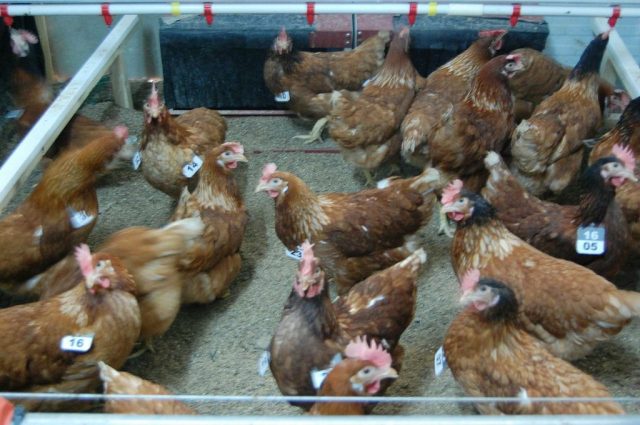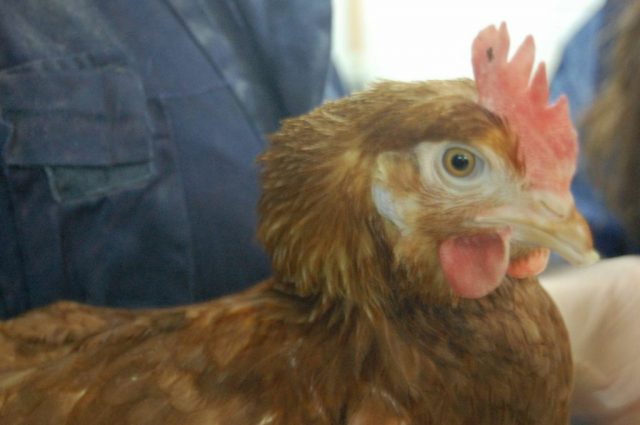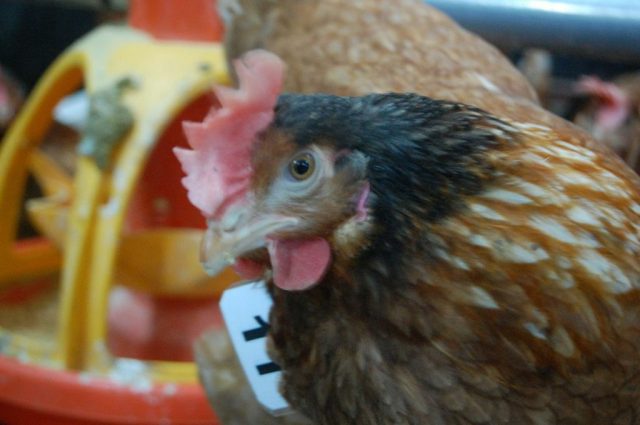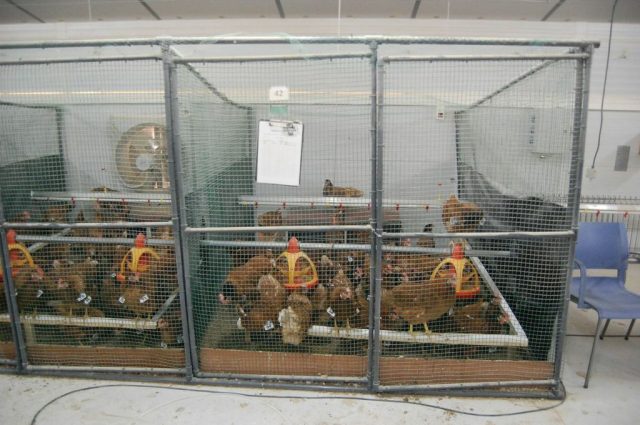Artificial distinction and real discrimination: Manipulating physical appearance

Scientific experiments using animals frequently involve the marking of animals that artificially changes their phenotype. For instance, penguins with flipper bands have been used to study climate change. However, as Saraux et al. 1 show, this banding reduces penguins’ survival rate. Consequently the study may mix up the effects of banding with other changes in penguin life and therefore be inaccurate.
Dennis et al. 2 in an experimental farm find evidence of behavioral changes in chickens (domestic fowls)when some proportion of a population of these birds has been marked. They run an experiment in which subgroups of chickens are marked on the back of their head. That is, each chicken can observe whether others are marked or unmarked, but it does not know whether it is marked itself or not. Thus the heterogeneity introduced in the population is purely artificial since the inner aggressiveness of the chickens is not modified. The two most salient results derived from this work are that marked birds suffer more aggression and have less body mass than their unmarked pen mates.
Their study does not explain how bilateral encounters between chickens lead to a higher aggression toward the marked chickens, task that we undertake in Inarra and Laruelle 3. Our primary concern is precisely to construct a game theoretical model that can sustain the results of this experiment in an accurate and coherent manner.


We model this experiment by modifying the Hawk-Dove Game which is a classic example of game theory used in animal behavior. In this game it is assumed that two individuals can choose from two strategies when in conflict with one another. Each individual can choose to behave as a “hawk” and escalate to a fight or choose to behave as a “dove” and peacefully back down. So if one individual acts as a hawk while the other acts as a dove, the “hawk” gets the resource (v) and the dove gets nothing (0). If two “hawks” meet, there will always be a fight, the winner receives the benefit (v), while the loser faces the cost of the fight (-c). It is assumed that c>v. On average the two hawks receive (v-c)/2. Individuals acting as doves flee, and so are never involved in a fight. There is no cost to act as a dove, only the possibility of receiving nothing if meeting a hawk or sharing the resource if meeting another dove, v/2. T
The concept of evolutionarily stable strategy 4 is used to solve the game. This notion captures the resilience of a strategy against any other strategy in the following sense: Consider a population where most members play an evolutionarily stable strategy while a small proportion of mutants choose a different strategy. In this situation each mutant’s expected payoff is smaller than the expected payoff of a “normal” individual, so that the mutants are driven out from the population. It is well-known that this game has one evolutionarily stable strategy.
The novelty of what we call heterogeneous game is that individuals now meet two types of opponent (marked individuals or non marked individuals). Consequently they can play either the same or different actions depending on the type of opponent that they face.

Though the modification of a population by marking a proportion of individuals is not linked to any disparity in capacity, we find that it affects the behaviour of its members. No strategy that equally treats the two types of individuals will be evolutionarily stable in heterogeneous games. Still any such game has two evolutionarily stable strategies (one in which the marked individuals are discriminated, the other in which the non marked individuals are discriminated).
Let us focus on the evolutionarily stable strategy where the marked individuals are discriminated. We find that independently of the proportion of marked individuals, the marked individual is always attacked more than the non marked individual. This result contradicts the intuition that aggressive behaviour toward members of a minority is more probable than aggressive behaviour toward members of the majority. Still the higher the proportion of marked individuals, the less likely aggressive behaviour toward them is.
In short, tagging generates real discrimination in which the discriminated type is systematically treated worse.
This work can also be linked to the literature of social dynamics, in particular to the inspiring work by Axtell et al 5. These authors show that if the population is artificially divided into two groups then a discriminatory norm emerges. In a completely different setting we obtain a similar conclusion: random tagging of individuals within a population gives rise to true discrimination against one of the types, who moreover behave aggressively among themselves.
About the authors:
Elena Iñarra is professor of economics and Annick Laruelle is Ikerbasque research professor at the department of Foundations of Economic Analysis I of the University of the Basque Country at Bilbao.
References
- Saraux, C., C. Le Bohec, J. M. Durant, V. A. Viblanc, M. Gauthier-Clerc, D. Beaune, Y-H. Park, N. G. Yoccoz, N. C. Stenseth and Y. Le Maho, (2011), Reliability of flipper-banded penguins as indicators of climate change. Nature 469, 203-206. ↩
- Dennis, R. L., R. C. Newberry, H. W. Cheng, and I. Estevez, 2008, Appearance Matters: Artificial Marking Alters Aggression and Stress, Poultry Science Review 87, 1939-1946. ↩
- Inarra E and A. Laruelle Artificial Distinction and Real DiscriminationJournal of Theoretical Biology, 2012, 505: 110-117. ↩
- Maynard Smith, J., and G. R. Price, (1973), The Logic of Animal Conflict, Nature 246, 15-18. ↩
- Axtell R. L., Epstein J. M. and H. P. Young (2001) The emergence of Classes in a Multi-Agent Bargaining Model. Social Dynamics edited by S. N. Durlauf and H. P. Young. ↩